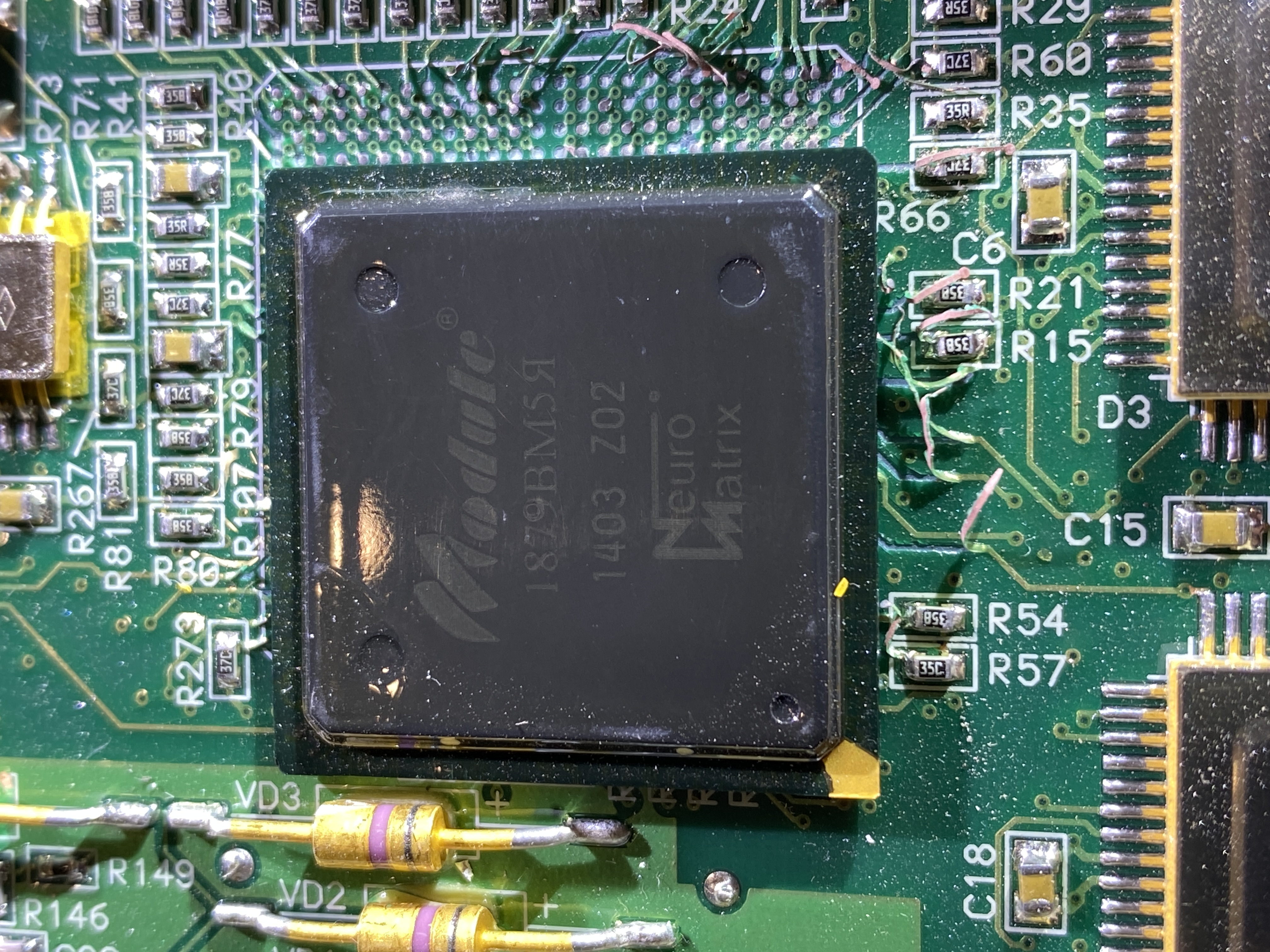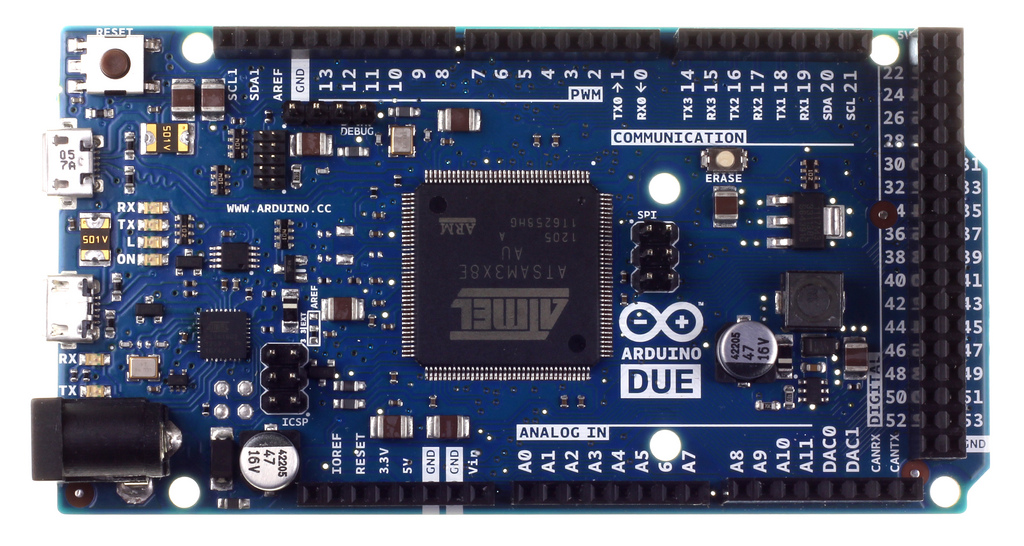|
ARM Cortex-A5
The ARM Cortex-A5 is a 32-bit processor core licensed by ARM Holdings implementing the ARMv7-A architecture announced in 2009. Overview The Cortex-A5 is intended to replace the ARM9 and ARM11 cores for use in low-end devices. The Cortex-A5 offers features of the ARMv7 architecture focusing on internet applications e.g. VFPv4 and NEON advanced SIMD. Key features of the Cortex-A5 core are: * Single-issue, in-order microarchitecture with an 8-stage pipeline * NEON SIMD instruction set extension (optional) * VFPv4 floating-point unit (optional) * Thumb-2 instruction set encoding * Jazelle RCT * 1.57 DMIPS / MHz Chips Several system-on-chips (SoC) have implemented the Cortex-A5 core, including: * Actions Semiconductor ATM7029 (gs702a) is a quad-core Cortex-A5 configuration * AMD Fusion APUs include a Cortex-A5 as a security co-processor * Amlogic S805, M805 and A111 * Analog Devices ADSP-SC57x, ADSP-SC58x series ARM Cortex-A5 + SHARC+ multicore DSP * Atmel SAMA5Dxx * Free ... [...More Info...] [...Related Items...] OR: [Wikipedia] [Google] [Baidu] |
Gigahertz
The hertz (symbol: Hz) is the unit of frequency in the International System of Units (SI), equivalent to one event (or cycle) per second. The hertz is an SI derived unit whose expression in terms of SI base units is s−1, meaning that one hertz is the reciprocal of one second. It is named after Heinrich Rudolf Hertz (1857–1894), the first person to provide conclusive proof of the existence of electromagnetic waves. Hertz are commonly expressed in multiples: kilohertz (kHz), megahertz (MHz), gigahertz (GHz), terahertz (THz). Some of the unit's most common uses are in the description of periodic waveforms and musical tones, particularly those used in radio- and audio-related applications. It is also used to describe the clock speeds at which computers and other electronics are driven. The units are sometimes also used as a representation of the energy of a photon, via the Planck relation ''E'' = ''hν'', where ''E'' is the photon's energy, ''ν'' is its frequ ... [...More Info...] [...Related Items...] OR: [Wikipedia] [Google] [Baidu] |
AnandTech
''AnandTech'' is an online computer hardware magazine owned by Future plc. It was founded in 1997 by then-14-year-old Anand Lal Shimpi, who served as CEO and editor-in-chief until August 30, 2014, with Ryan Smith replacing him as editor-in-chief. The web site is a source of hardware reviews for off-the-shelf components and exhaustive benchmarking, targeted towards computer building enthusiasts, but later expanded to cover mobile devices such as smartphones and tablets.For instance by: * * * * * Its investigative articles have been cited by other technology news sites like PC Magazine and The Inquirer. Some of their articles on mass-market products such as mobile phones are syndicated by CNNMoney. The large accompanying forum is recommended by some books for bargain hunting in the technology field. AnandTech was acquired by Purch on 17 December 2014. Purch was acquired by Future in 2018. History In its early stages, Matthew Witheiler served as co-owner and Senior Hard ... [...More Info...] [...Related Items...] OR: [Wikipedia] [Google] [Baidu] |
Exynos
Exynos, formerly Hummingbird (), is a series of ARM-based system-on-chips developed by Samsung Electronics' System LSI division and manufactured by Samsung Foundry. It is a continuation of Samsung's earlier S3C, S5L and S5P line of SoCs. Exynos is mostly based on the ARM Cortex cores with the exception of some high end SoCs which featured Samsung's proprietary "M" series core design; though from 2021 onwards even the flagship high-end SoC's will be featuring ARM Cortex cores. History In 2010, Samsung launched the Hummingbird S5PC110 (now Exynos 3 Single) in its Samsung Galaxy S smartphone, which featured a licensed ARM Cortex-A8 CPU. This ARM Cortex-A8 was code-named Hummingbird. It was developed in partnership with Intrinsity using their FastCore and Fast14 technology. In early 2011, Samsung first launched the Exynos 4210 SoC in its Samsung Galaxy S II mobile smartphone. The driver code for the Exynos 4210 was made available in the Linux kernel and support was ... [...More Info...] [...Related Items...] OR: [Wikipedia] [Google] [Baidu] |
Samsung
The Samsung Group (or simply Samsung) ( ko, 삼성 ) is a South Korean multinational manufacturing conglomerate headquartered in Samsung Town, Seoul, South Korea. It comprises numerous affiliated businesses, most of them united under the ''Samsung'' brand, and is the largest South Korean (business conglomerate). Samsung has the eighth highest global brand value. Samsung was founded by Lee Byung-chul in 1938 as a trading company. Over the next three decades, the group diversified into areas including food processing, textiles, insurance, securities, and retail. Samsung entered the electronics industry The electronics industry is the economic sector that produces electronic devices. It emerged in the 20th century and is today one of the largest global industries. Contemporary society uses a vast array of electronic devices built-in automated or ... in the late 1960s and the construction and shipbuilding industries in the mid-1970s; these areas would drive its subseque ... [...More Info...] [...Related Items...] OR: [Wikipedia] [Google] [Baidu] |
Adreno
Adreno is a series of graphics processing unit (GPU) semiconductor intellectual property cores developed by Qualcomm and used in many of their SoCs. History Adreno (an anagram of AMD's graphic card brand ''Radeon''), was originally developed by ATI Technologies and sold to Qualcomm in 2009 for $65M, and was used in their mobile chipset products. Early Adreno models included the Adreno 100 and 110, which had 2D graphics acceleration and limited multimedia capabilities. At the time, 3D graphics on mobile platforms were commonly handled using software-based rendering engines, which limited their performance. With growing demand for more advanced multimedia and 3D graphics capabilities, Qualcomm licensed the Imageon IP from AMD, in order to add hardware-accelerated 3D capabilities to their mobile products. Further collaboration with AMD resulted in the development of the Adreno 200, originally named the AMD Z430, based on the R400 architecture used in the Xenos GPU of the Xbox ... [...More Info...] [...Related Items...] OR: [Wikipedia] [Google] [Baidu] |
List Of Qualcomm Snapdragon Devices
This is a list of Qualcomm Snapdragon systems on chips (SoC) made by Qualcomm for use in smartphones, tablets, laptops, 2-in-1 PCs, smartwatches, and smartbooks devices. Before Snapdragon SoC made by Qualcomm before it was renamed to Snapdragon. Snapdragon S series Snapdragon S1 Snapdragon S1 notable features over its predecessor (MSM7xxx): * CPU features ** 1 core up to 1 GHz Scorpion or Cortex-A5 or ARM11 ** Up to 256K L2 cache ** Up to 32K+32K L1 cache * GPU features ** Adreno 200 (From Software rendered or Adreno 130) ***OpenGL ES 1.1 ***OpenVG 1.0 *** Direct3D Mobile *** Unified shader model 5-way VLIW * DSP features ** Hexagon QDSP5 at 350 MHz or Hexagon QDSP6 600 MHz * ISP features ** Up to 12 MP camera * Modem and wireless features ** External Bluetooth 4.0 or external Bluetooth 2.0/2.1 on some models * 45 or 65 nm manufacturing technology Snapdragon S2 Snapdragon S2 notable features over its pred ... [...More Info...] [...Related Items...] OR: [Wikipedia] [Google] [Baidu] |
Qualcomm
Qualcomm () is an American multinational corporation headquartered in San Diego, California, and incorporated in Delaware. It creates semiconductors, software, and services related to wireless technology. It owns patents critical to the 5G, 4G, CDMA2000, TD-SCDMA and WCDMA mobile communications standards. Qualcomm was established in 1985 by Irwin M. Jacobs and six other co-founders. Its early research into CDMA wireless cell phone technology was funded by selling a two-way mobile digital satellite communications system known as Omnitracs. After a heated debate in the wireless industry, the 2G standard was adopted with Qualcomm's CDMA patents incorporated. Afterwards there was a series of legal disputes about pricing for licensing patents required by the standard. Over the years, Qualcomm has expanded into selling semiconductor products in a predominantly fabless manufacturing model. It also developed semiconductor components or software for vehicles, watches, laptops ... [...More Info...] [...Related Items...] OR: [Wikipedia] [Google] [Baidu] |
NeuroMatrix
NeuroMatrix is a digital signal processor (DSP) series developed by NTC Module. The DSP has a VLIW/SIMD architecture. It consists of a 32-bit RISC core and a 64-bit vector co-processor. The vector co-processor supports vector operations with elements of variable bit length (US Pat. 6539368 B1) and is optimized to support the implementation of artificial neural networks. From this derives the name NeuroMatrix Core (NMC). Newer devices contain multiple DSP cores and additional ARM or PowerPC 470 cores. Overview Details L1879VM1 * russian: Л1879ВМ1 * start of development in 1996, start of production in 1999 at Samsung 1879VM2 * russian: 1879ВМ2 * manufactured at Fujitsu 1879VM3 * russian: 1879ВМ3 * manufactured at Fujitsu 1879VM5Ya * russian: 1879ВМ5Я * manufactured at Fujitsu Japan 1879VM6Ya * russian: 1879ВМ6Я * manufactured at GlobalFoundries Malaysia 1879VM8Ya * russian: 1879ВМ8Я * system-on-a-chip (SoC) containing 4 computing clusters, each consi ... [...More Info...] [...Related Items...] OR: [Wikipedia] [Google] [Baidu] |
NTC Module
NTC Module (Research Center "Module") is a Russian scientific technological center (R&D production enterprise), founded in 1990 by the two enterprises of Russian military–industrial complex: NPO Vympel and NII Radiopriborostroyeniye. Conducting an applied researches in the field of digital pattern recognition technologies and the development of DSP and DIP hardware, constructing functionally complete computing complexes on this basis. Developer of a well-known microprocessor series NeuroMatrix. The embedded computers designed by NTC Module are used in the industrial, avionics and space applications including International Space Station The International Space Station (ISS) is the largest Modular design, modular space station currently in low Earth orbit. It is a multinational collaborative project involving five participating space agencies: NASA (United States), Roscosmos ( .... In particular, the MBC186 is installed at " Zarya" module and the service module of ISS; ... [...More Info...] [...Related Items...] OR: [Wikipedia] [Google] [Baidu] |
Vybrid Series
The Vybrid Series is a low power System on chip from Freescale Semiconductor with ARM Cortex-A5 The ARM Cortex-A5 is a 32-bit processor core licensed by ARM Holdings implementing the ARMv7-A architecture announced in 2009. Overview The Cortex-A5 is intended to replace the ARM9 and ARM11 cores for use in low-end devices. The Cortex-A5 off ... and optional Cortex-M4 cores. The full featured ''VF6xx'' comes with asymmetrical multiprocessing using both cores. Lower cost alternative such as the ''VF5xx'' and ''VF3xx'' only support the ''ARM Cortex-A5''. The ''ARM Cortex-A5'' cores run from 266 MHz to 500 MHz depending on package options and ''ARM Cortex-M4'' Cores at 168 MHz if present. References External links Freescale processors roadmap by series on EASA Freescale Semiconductor NXP Semiconductors {{compu-hardware-stub ... [...More Info...] [...Related Items...] OR: [Wikipedia] [Google] [Baidu] |
Freescale
Freescale Semiconductor, Inc. was an American semiconductor manufacturer. It was created by the divestiture of the Semiconductor Products Sector of Motorola in 2004. Freescale focused their integrated circuit products on the automotive, embedded and communications markets. It was bought by a private investor group in 2006, and subsequently merged into NXP Semiconductors in 2015. History As of 2003, Motorola Semiconductor Products Sector earned US$5.0 billion in semiconductor sales in 2002 (out of US$27 billion sales for all of Motorola). Motorola announced that their semiconductor division would be divested on October 6, 2003, to create Freescale. Freescale completed its Initial public offering (IPO) on July 16, 2004, at a price of US$13. In its announcement, it estimated the stock price to be US$17.50- 19.50 but following a cooling of the market towards tech stocks, it lowered its price to US$13. Existing shareholders of Motorola stock received 0.110415 shares of Freescale ... [...More Info...] [...Related Items...] OR: [Wikipedia] [Google] [Baidu] |
AT91SAM
Atmel ARM-based processors are microcontrollers and microprocessors integrated circuits, by Microchip Technology (previously Atmel), that are based on various 32-bit ARM processor cores, with in-house designed peripherals and tool support. Overview ARM licenses the core design for a series of 32-bit processors. ARM does not manufacture any complete silicon products, just intellectual property (IP). The ARM processors are RISC (reduced instruction set computing). This is similar to Microchip’s AVR 8-bit products, a later adoption of RISC architecture. Whereas the AVR architecture used Harvard architecture exclusively, some ARM cores are Harvard (Cortex-M3) and others are Von Neumann architecture (ARM7TDMI). Semiconductor companies such as Microchip take the ARM cores, which use a consistent set of instructions and register naming, and add peripheral circuits such as ADCs (analog to digital converters), clock management, and serial communications such as USART, SPI, I2C, CAN, L ... [...More Info...] [...Related Items...] OR: [Wikipedia] [Google] [Baidu] |




